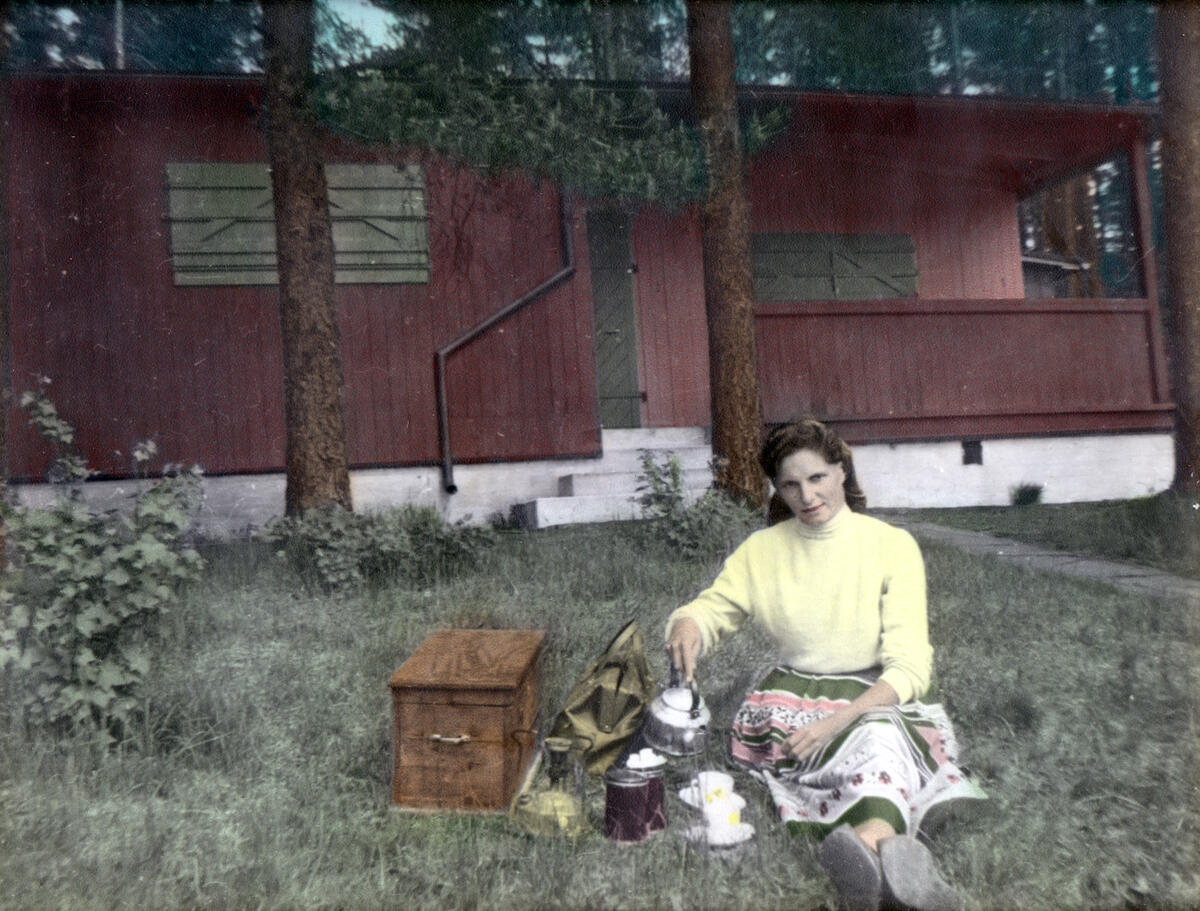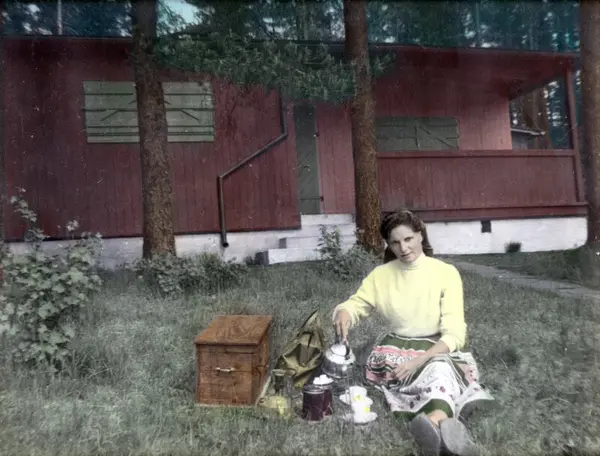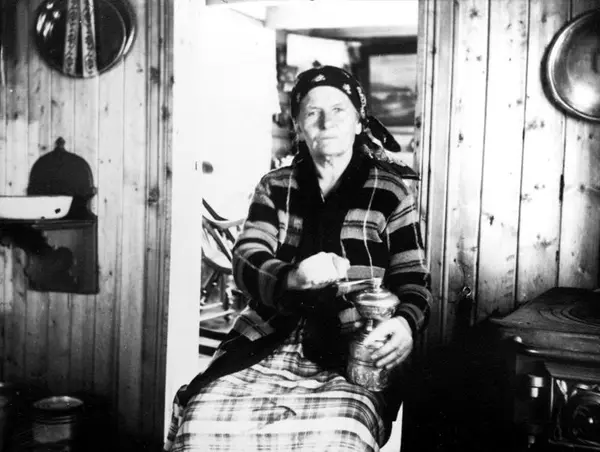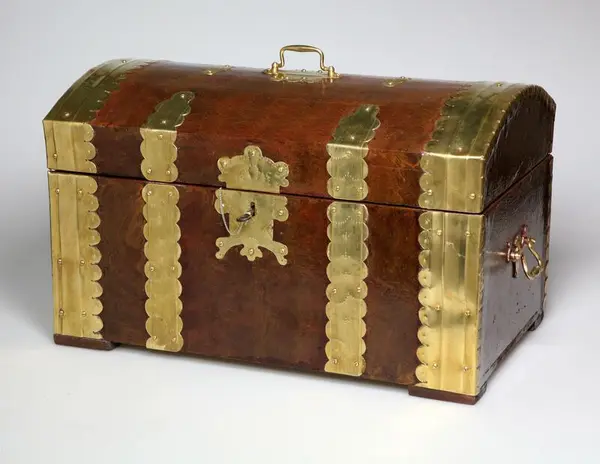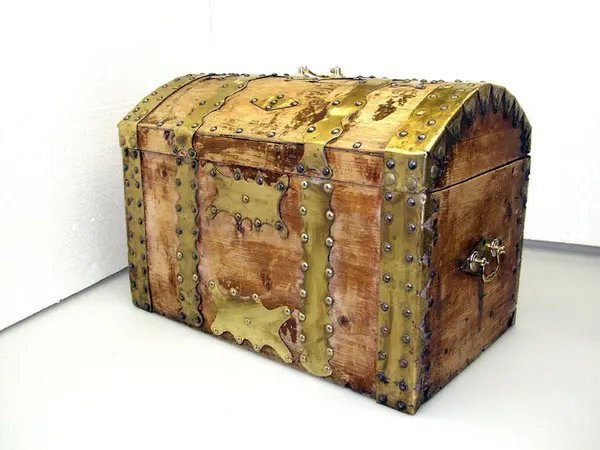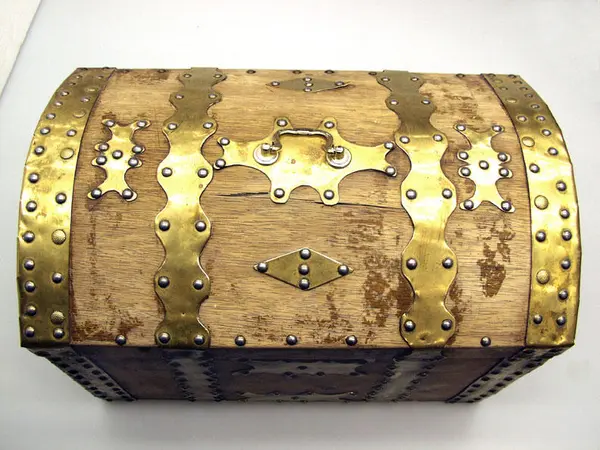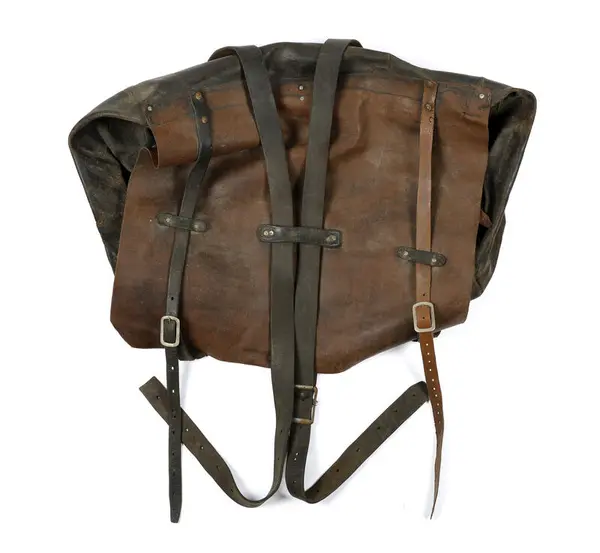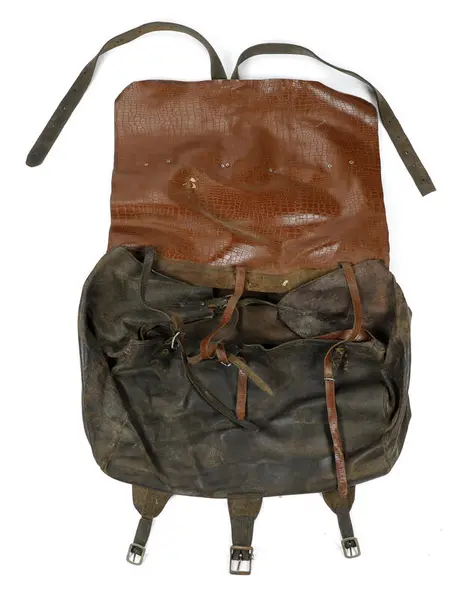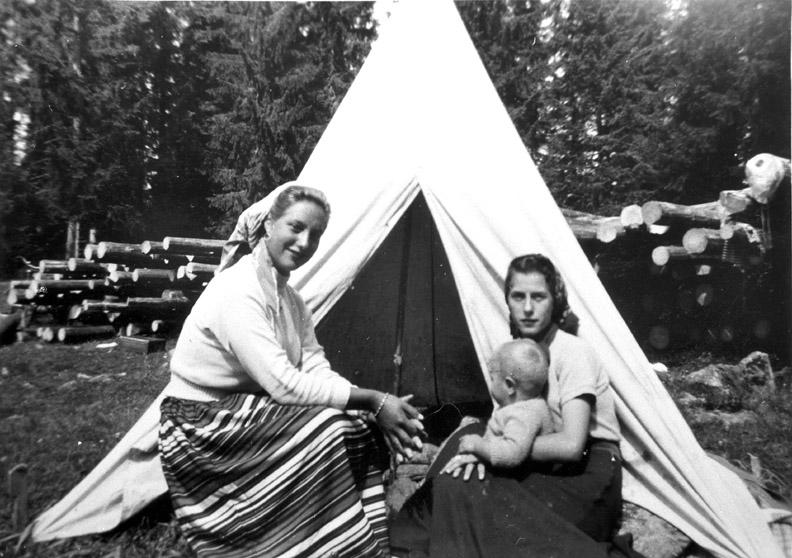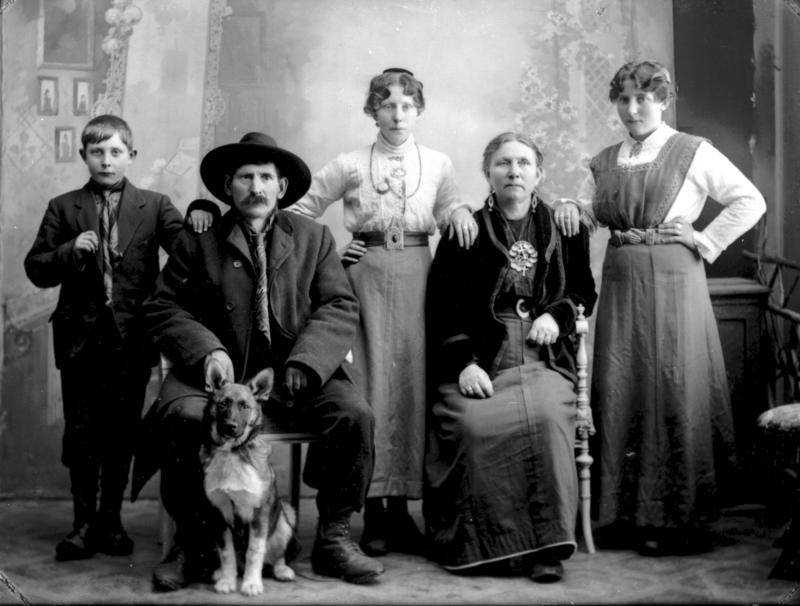- 1/1
Kersti Karlsen making coffee, ca 1960. Foto: Privat/ Anno Glomdalsmuseet
There are no specific Tater food traditions. Their travelling way of life was based on swapping goods and services with the residents. Like so much else in their culture, food traditions have evolved along with local traditions among residents.
It is the environment created by a life on the road that characterises the Tater diet. Unlike farmers who had room to bake, cure, juice and pickle, the Travellers’ ever-moving life provided limited opportunities for these activities.
Many of the people the Anno Glomdal Museum has spoken to grew up between 1920 and 1950. They experienced a time dominated by poverty and a lack of almost everything. Although meat, and especially pork flank, was a clear favourite, it was not available on a daily basis for many. The main meal of the day was porridge. This was also the principal meal for the residents.
The Tater people used cash to buy coffee, tobacco and sugar from local merchants. The whole family drank coffee, including the children, although the children were not given coffee that was made from grounds. The Travellers just had to have coffee and tobacco. If they ran out, gloom would descend, according to Milla.
- 1/2
Traveling woman cooking on a meadow in Trysil, 1970. Foto: Bjørn Myrvang - 2/2
And older traveling woman with a coffee grinder, 1940. Foto: Arkivet til Norsk misjon blant hjemløse / Riksarkivet
Emma describes her family's diet when she was growing up:
"Mum and Dad had to have coffee and tobacco. We also drank coffee, but not made from grounds (boiled several times). Sometimes, we only ate once a day. Eating a piece of pork and a potato was like Christmas to us. Otherwise, we ate a lot of porridge, so it's no wonder we were called the ‘porridge people’."
"My mum often made ‘neva’ porridge, which was very common in Solør when I was growing up. ‘Neva’ porridge was made from fine-milled oats. Everyone got a small piece of pork flank they could dip in the porridge. It was called ‘neva’ porridge because the pork was held in the ‘nevan’ (hands). Otherwise, we liked whole-grain pea soup, cooked with a pork bone. We also loved ‘pork flank on the embers’; we used the same technique as with sausages, namely roasting it on a stick over the fire. We ate eggs when we could get them."
"We never used a fork, just a knife, and we each had a plate, cup and saucer. We drank water for the most part, or juice if we could get some by trading. We didn't make juice ourselves, but ate the berries straight from nature. We didn't have the equipment to make juice or any opportunity to store food. Rock candy was our sweet treat."
(Emma, born 1934)
The Tater people who were permanent residents during parts of the year could enjoy a more varied diet, but porridge was still the staple dish on weekdays.
Silje's family only travelled for parts of the year, and she describes their diet:
"My parents bought sugar and coffee, then bartered for the rest of the food. My mother got eggs, pork flank and vegetables that way. We ate a lot of meat and pork flank. My mother made such lovely egg pancakes. We ran to the farms and bartered so we would get strawberries and rhubarb, and my mum made soup. Then she fried very thin pancakes. Otherwise, there was a lot of porridge for supper. Water porridge with a little milk was our regular supper. Sometimes we bartered to get cured meats. We cooked pea soup. The men preferred fried pork flank and bread. The old women would make ‘neva’ porridge. We ate a lot of pork flank and potatoes with gravy."
(Silje, born 1934).
Fish was a natural part of the diet for the Boat Travellers, and Johan B. (born 1931) says that, when he was growing up, they had a cod trap and a net they used to catch ballan wrasse. On the other hand, fish was something the Travellers who lived in the interior were reluctant to eat, although herring was an important part of their diet.
Maja describes her diet when she was growing up:
"In the tent we had a coffee chest, a pot and a primus, which we used to make coffee. The food was mostly bread, margarine, and herring. Herring was the poor man's food in those days. We put sugar on the slice of bread. I remember that at school the kids often swapped slices of bread with each other. The others had proper cuts of sliced meat, so no one would trade with us who only had sugar."
(Maja, born 1936).
The Tater people had clear preferences in regard to food and the ways it should be processed and stored. The food and "coffee stuff" were stored in the coffee chest.
- 1/4
Serving of lunch and coffee. Foto: Anno Glomdalsmuseet - 2/4
Coffee chest from Glomdalsmuseet. Foto: Anno Glomdalsmuseet - 3/4
Coffee chest with brass fitting. Foto: Anno Glomdalsmuseet - 4/4
Details on coffee chest with brass fittings. Foto: Anno Glomdalsmuseet
While the Tater people in the interior had limited space in their carts, the Boat Travellers could place their belongings in a larger area in the boat. They did not usually have coffee chests for food storage. Johan Bredesen says they had two huge storage benches with lots of space for food. One was used to store vegetables and the other to store potatoes. The vegetables were barter goods. When they went ashore, they would trade in their goods for fish that they stored in two large barrels. This was stockfish or plain fish .
In addition to the coffee chest where they stored food, the Tater people in the interior also used a leather knapsack where bed linen and clothes were stored. After the horse disappeared and the car became increasingly common, the coffee chest and leather knapsack gradually disappeared.
- 1/2
Leather knapsack. Foto: Anno Glomdalsmuseet - 2/2
Travelling bag in leather, open lid. Foto: Anno Glomdalsmuseet
